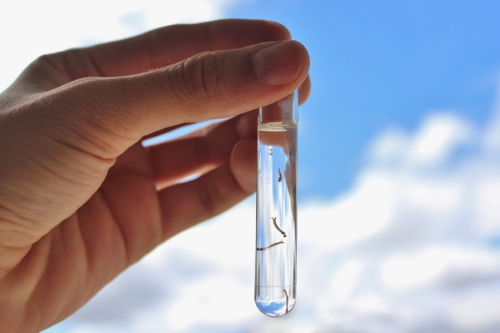 Hawaii’s health officials have begun to receive aid from the Centers for Disease Control and Prevention (CDC) in combating the island’s ongoing dengue fever outbreak. Representatives of the CDC’s vector-borne infectious disease division arrived in Hawaii yesterday and have brought specialized mosquito traps that work well with the mosquitoes associated with spreading dengue fever.
Hawaii’s health officials have begun to receive aid from the Centers for Disease Control and Prevention (CDC) in combating the island’s ongoing dengue fever outbreak. Representatives of the CDC’s vector-borne infectious disease division arrived in Hawaii yesterday and have brought specialized mosquito traps that work well with the mosquitoes associated with spreading dengue fever.
By trapping, tracking, and analyzing where infected mosquitoes are found, it is hoped that the outbreak can be better mapped out and preventative strategies formed.
Of the 117 confirmed cases, 29 patients were under the age of 18 and 103 were local residents. There are likely many more people who carry the disease but don’t know it. Dengue fever only causes symptoms in around a quarter of those infected, but these individuals can still infect other mosquitoes that bite them and contribute to the outbreak.
When symptoms develop, they appear around five to seven days after infection. Victims can experience high fever, intense joint, muscle, and bone pain, rashes, severe headaches and/or pain behind the eyes, bleeding from the nose and gums or an increased vulnerability to bruises.
Dengue is a form of hemorrhagic fever, but this variant is considered separate by the CDC even though it is caused by the same virus. Dengue hemorrhagic fever is similar to the main infection but can cause persistent vomiting, breathing difficulties, and abdominal pain as the body’s capillaries begin to leak. In the worst case scenario, this can cause circulatory shock, organ failure, and death.
Depending on the severity and how early it is recognized, dengue fever has a mortality rate of anywhere between one and12 percent.
Treating dengue fever is tricky because there is no effective cure. The best option is for victims to try and manage the symptoms and wait for the disease to pass, which usually takes about two weeks. Anyone who thinks they are infected should take pain relievers along with medicines containing acetaminophen (e.g. “Tylenol”). “Aspirin” is best avoided, even though it can ease fever and pain. This is because Aspirin has blood-thinning properties that can make the bleeding symptoms worse. Anyone who experiences worsening symptoms, vomiting, or abdominal pain within 24 hours of the fever diagnoses needs to seek medical attention immediately.
The Aedes breed of mosquito, which carries dengue, is most active during the day and in urban areas. This means that methods such as mosquito netting around the bed aren’t as effective. The most effective means of prevention is to disrupt the mosquitoes’ breeding grounds. Aedes mosquitoes lay eggs in shallow water surfaces and almost any such surface will do. Tidying up small pools of water, such as on top of trash cans after a rainfall, can help.
Dengue fever is not native to Hawaii and outbreaks are normally caused by infected travelers returning from tropical regions in Asia, Africa, the Caribbean, and the South Pacific.
Sources for Today’s Article:
“Dengue,” Centers for Disease Control and Prevention web site, September 27, 2012; http://www.cdc.gov/dengue/fAQFacts/index.html.
Goldschmidt, D., “More than 100 Cases of Dengue Fever on Hawaii’s Big Island, CDC Joins Investigation,” CNN web site, last updated December 2, 2015; http://www.cnn.com/2015/12/02/health/hawaii-cdc-dengue-fever/index.html, last accessed December 3, 2015.
Senthilingam, M., “How Dengue Fever Is Spreading round the World,” CNN web site, last updated September 2, 2015; http://www.cnn.com/2015/09/01/health/dengue-fever-mosquito/, last accessed December 3, 2015.
